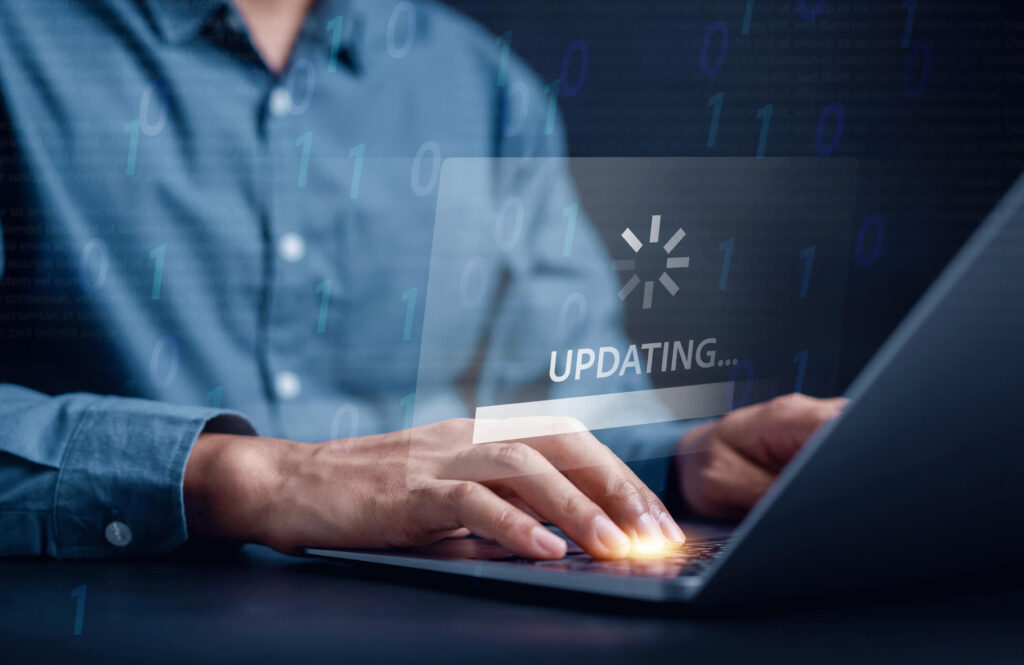Unpatched vulnerabilities are among the leading causes of cybercrime. What’s worse, attacks on unpatched systems are more devastating than other kinds of breaches, costing 54% more on average than user errors or other cybersecurity incidents. It’s why patch management is essential to every security—and IT—deployment.
Patch management is the practice of keeping hardware and software up-to-date with the latest protective measures.
Today, we’ll guide you through the essentials of patch management, providing insights to help you safeguard your digital assets effectively. Let’s dive in and empower you with the knowledge to fortify your systems against evolving cyber threats.
Understanding Patch Management
Software is constantly evolving as new features are added and users (and cybercriminals) explore the potential of existing functionalities. Over time, issues within the existing app or program’s code might become apparent, and developers work to develop a solution—or, a patch.
Patch management is a process that involves:
- Anticipating and integrating software updates seamlessly.
- Ensuring that all systems are up to date.
- Making sure that any required installations cause minimal downtime or losses.
Patch management becomes increasingly critical at scale because of the sheer volume, diversity, and sensitivity of devices and systems across an enterprise network. While individual updates may seem simple to manage (and many are available automatically), organizations must actively and intentionally install updates as seamlessly as possible.
Regarding security, patch management is one of the foundational pillars of organizational cyber defense. No matter how well-protected a company’s systems seem, one unpatched gap could be the difference between a minor blip on the threat radar and a full-blown cyberattack.
Exploring Software Patches
What is a software patch? Fully appreciating software patches and how they work requires understanding what is being patched. Typically, patches address security vulnerabilities or weaknesses in software.
These weaknesses might be inherent to its code or involve how the app or program interacts with other software, hardware, and user activities.
All patches seek to cover these kinds of gaps. Notably, there are three main kinds of patches:
- Security patches. These updates directly address an existing vulnerability, such as a pathway for illegitimate access, by adding or changing the code that gives rise to it.
- Bug fixes. These updates address a specific feature that’s not working as intended or not working at all, which might impact privacy and security indirectly.
- New features. Rather than accounting for potential or existing weaknesses, these updates add new features and new ground to monitor.
In practice, patches are often bundled and released together, such that one update may include several bug fixes alongside new features. However, critical patches or bug fixes are usually issued as soon as they are ready to minimize potential harm across the user base.
The specific ways you can apply patches to address vulnerabilities vary. That said, patches often involve additional barriers or restrictions on user access and greater visibility into user activity.
The Patch Management Process
Patch management involves two major processes:
- Scanning for available patches
- Installing the patches
The first step involves leveraging system-wide monitoring or individual systems’ reporting tools to update a central dashboard when patches become available. The second step requires identifying how resource-intensive the installation will be and allotting the time for it.
The best time to install a patch is as soon as it becomes available. However, that’s not always viable, as installation may cause interruptions to the system and complicate workflows.
The decision to prioritize patching over regular business operations should be guided by the urgency of the patch and the potential system impact.
One of the patch management best practices that requires minimal pre-planning is taking advantage of automatic patches and updates. Many applications allow for automatic patch installation as soon as they become available.
The Cybersecurity & Infrastructure Security Agency (CISA) recommends automatic patches, provided they come from trusted sources.
Challenges and Considerations
The biggest hurdle to effective patch management is covering the entire scope of devices, systems, and users within an organization’s IT ecosystem. Whether employees use company-owned or personal devices (i.e., BYOD), each must be accounted for.
Third-party users, hardware, and software add complexity to this scope.
Along similar lines, organizations must perform a balancing act between regular software updates and system stability. Updates and patches can interrupt the compatibility between software and hardware, such that a program cannot run on a device with (or without) a given security update installed.
Sequencing your updates and backing up systems before significant changes will facilitate smooth operations despite these potential issues.
Last but not least, there are regulatory challenges inherent to patch management. Regulations such as HIPAA, PCI-DSS, and EU-GDPR require automated scanning for available patches and installation as soon as they are available—or as soon as possible—for compliance.
Tools and Technologies for Patch Management
Patch management tools generally account for both major processes needed: scanning for the patches and installing them.
Emerging tools and technologies make it faster, more secure, and less resource-intensive to manage patches, covering both steps comprehensively. These tools typically support:
- Scheduled patches. Where full automation is not viable, organizations may block out and schedule operations to accommodate regular, scheduled update installs.
- DevSecOps integration. This paradigm calls for robust security testing at all software development and deployment stages, leading to more frequent updates.
- Service-level agreements (SLAs). In a patch management context, SLAs ensure software vendors take responsibility for timely, effective security patching as part of their scope of work.
Another factor you should consider in all stages of the vulnerability scanning and patching process is backup management. You should establish secure baselines and save them before any significant changes. Even a seemingly safe patch from a trusted vendor can include unforeseen vulnerabilities. Secure backups safeguard against data compromise.
Optimize Your Patch Management with Helixstorm
How does your organization approach patch management?
A robust, managed backup plan would make facilitating updates across your system easier and more secure. At Helixstorm, we provide sophisticated support and proactive maintenance that can be challenging to cover in-house.
Whether you need ongoing managed backup support, full-suite IT support, or a la carte professional services, we’re here to help.
Contact us today to learn how our managed backup and other services can facilitate your patch management, improve your security, and help you focus on your business.



